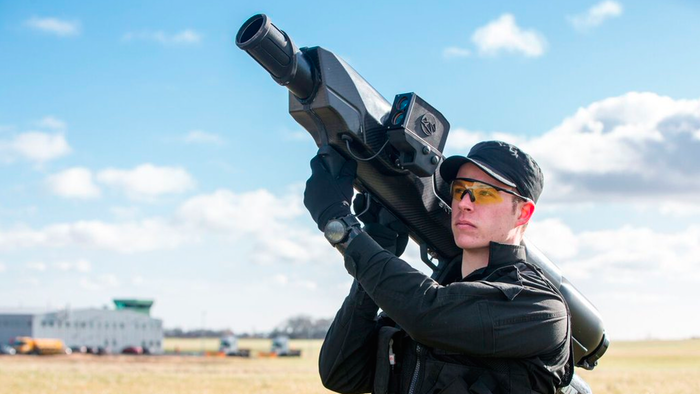From trained eagles to radio beam disabling systems, countermeasures to deal with rogue drones illegally entering sensitive airspace are proliferating almost as fast as drones themselves. British engineering firm OpenWorks' approach to dealing with unmanned aerial interlopers takes the form of a shoulder-mounted launcher that captures errant aircraft in a net from up to 100 m (330 ft) away.
With drones exploding in popularity over the past couple of years, it follows that concern around exactly who is flying them and where is also on the rise. From lurking around the Japanese Prime Minister's office to crash landings on the White House lawn, the potential for malicious or irresponsible use of the technology has inspired some imaginative approaches to ensuring public safety.
Kind of like the drone-hunting drone that we covered earlier this year, the SkyWall launcher is designed to disable unauthorized aircraft by trapping them in a net. The system uses a compressed gas-powered launcher to fire a programmable projectile that deploys a large net at just the right time to net the drone. Once the drone is all wrapped up in the net, an attached parachute then safely brings it back to earth.
The user can take aim at the drone with the help of a so-called SmartScope, which consists of a laser range finder and inertial measurement unit. This calculates both the distance and flight path of the target, and then the trajectory required for a direct hit and informs the user of a target lock via a continuous beep. If the projectile fails to meet its target, the parachute will still deploy and the projectile can be reused.
The SkyWall launcher is man portable and though it appears pretty sophisticated, can apparently be used with minimal training. The entire system weighs 10 kg (22 lb) and can be reloaded in eight seconds. There is no word yet on pricing, but OpenWorks does describe the Skywall as cost-effective, and says it expects to see them in use before the end of the year.
You can see it in action in the video below.
Source: OpenWorks

